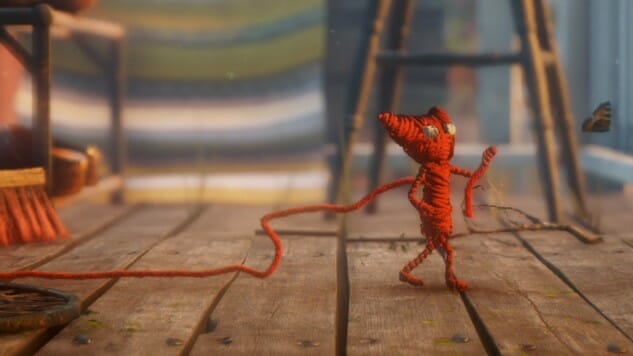Unravel: Lose the Feeling

When Unravel was originally revealed at EA’S 2015 E3 press conference, it immediately captured the hearts and minds of those in attendance. Due to its cheery, emotional appeal and adorable little star made of yarn, it was a stark departure from what we typically expect from EA’s usual portfolio. It conjured something warm, familiar and nostalgic in viewers—a friendly little platformer with a cuddly star akin to that of LittleBigPlanet. It’s unfortunate, then, that it’s unable to stand on its own as a vehicle for the woolen red Yarny mascot or a competitor to other, similar character-based platformers.
Problems arise with Unravel almost immediately. It’s apparent from the beginning that Yarny has been borne of memories and your journey will be punctuated by times gone by in an elderly woman’s life. Immediately you’re drawn in, hoping to set whatever has befallen this seemingly kind old woman’s mind right again with altruistic thoughts of bettering others’ lives. But it goes absolutely nowhere from here.
Unfortunately, from the start the game dampens any sort of real emotional connection you may have formed with the narrative. That’s part of the problem with Unravel, in fact—there’s no real story to speak of and you’re simply viewing wedges of memories from the woman’s life. To what end? You’re supposed to feel the power of memory, loss and nostalgia, but the lack of a goal or any clear-cut reasoning for Yarny’s journey certainly detracts from the experience.
What’s presented as a gentle platformer with environmental puzzles very quickly devolves into an exercise in frustration. For starters, Yarny is a bit off-putting—he’s less an adorable mascot than a strange, voodoo doll-like thing with soulless eyes. As you guide Yarny out of pools of water, across windowsills, and through tunnels, a bit of fridge horror even sets in: This creature is made of yarn and is essentially strewing its innards across the play field. A dreadful thought indeed, especially compared to other, more approachable characters.
The puzzles are inoffensive enough, but the controls don’t allow them to shine. They aren’t very inventive either, tasking players with using Yarny’s body as a rope to cross short distances by way of swinging, occasionally requiring a “refill” of extra yarn. It’s a mix of those moves, pushing and pulling blocks and platforms, and trying to figure out what the game wants from you. There’s a very distinct lack of variety that’s disappointing to see here, especially when such great care was obviously taken to create a new character with potential.
